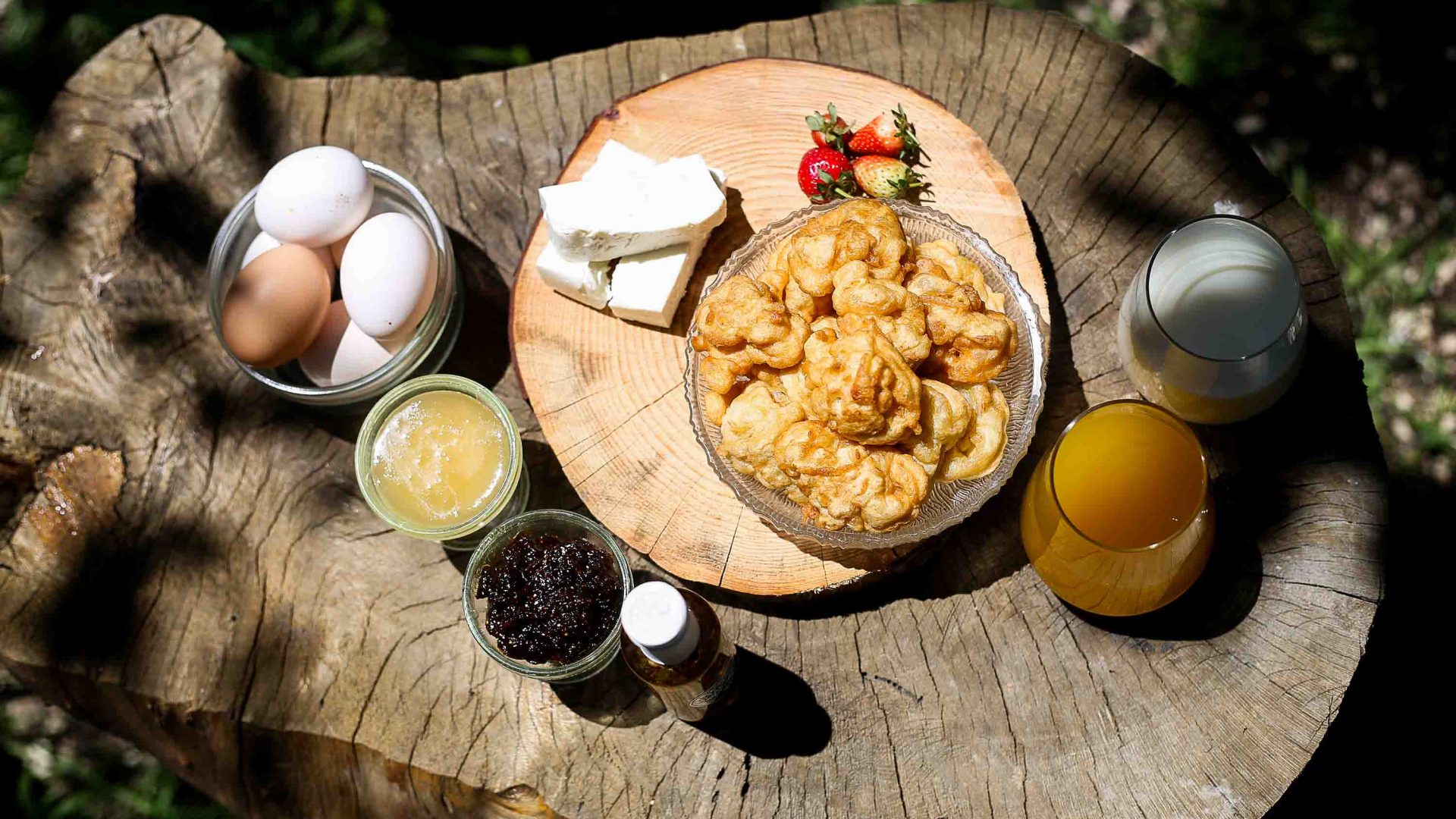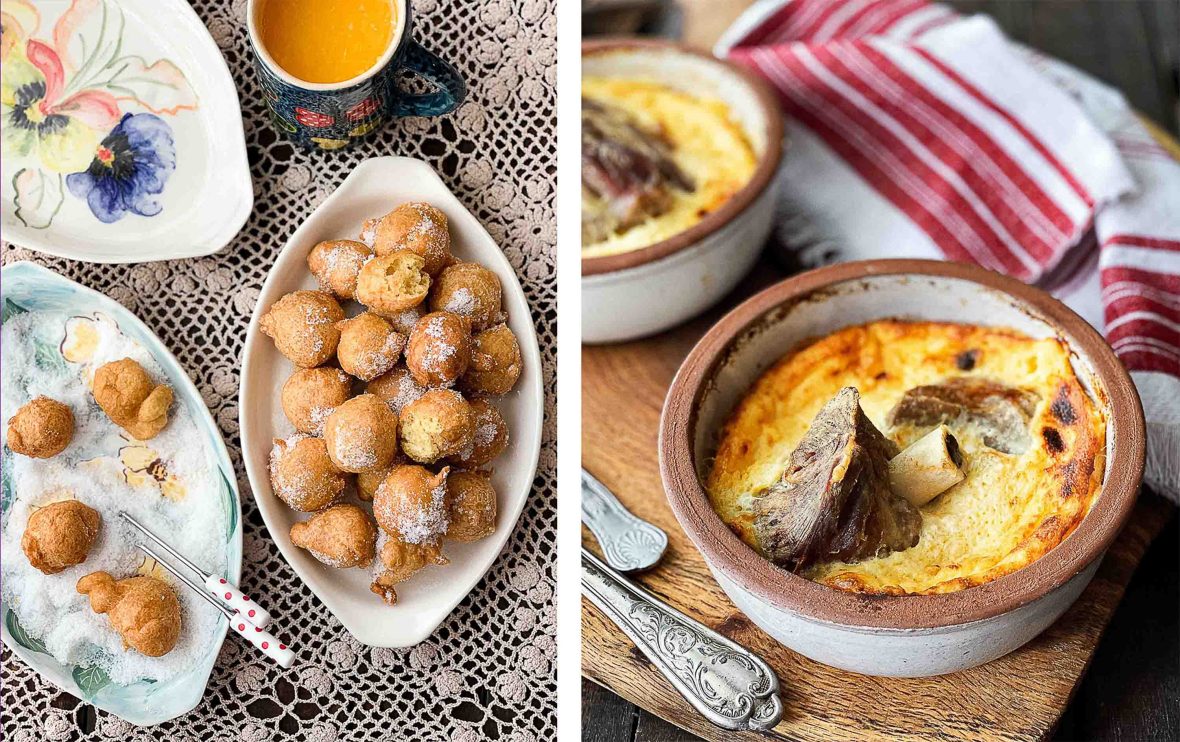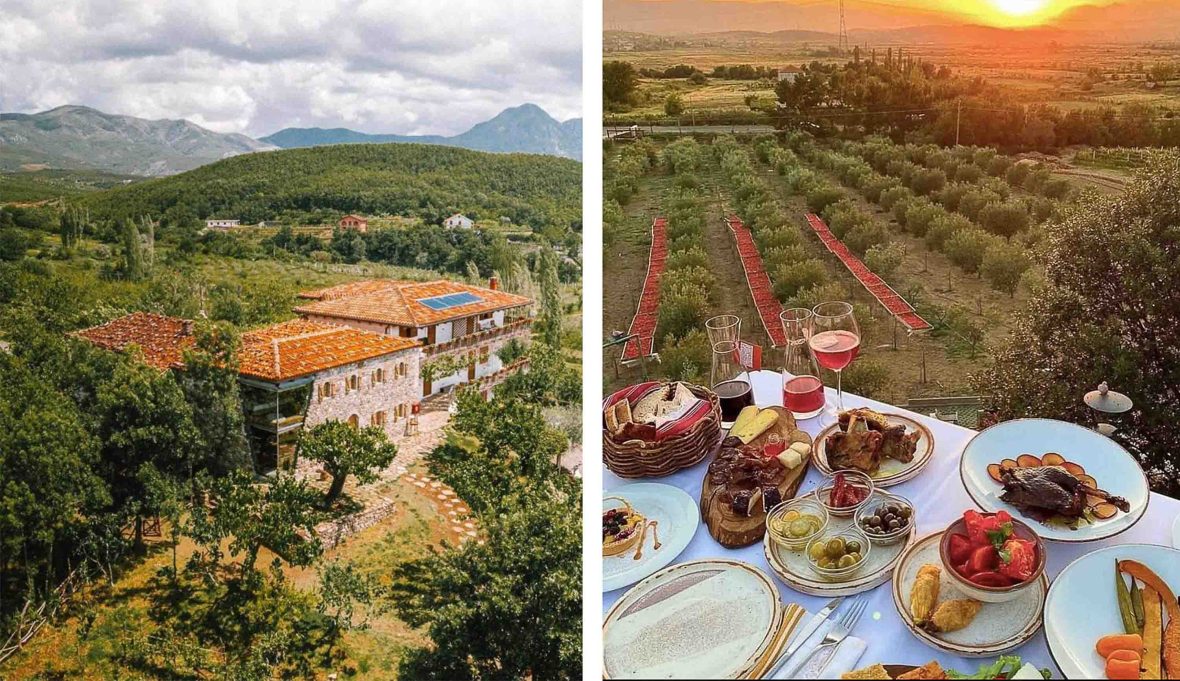
Tucked between Greece, Macedonia and Montenegro, Albania—and its surprisingly diverse food scene—often flies under the travel radar. But not anymore. Emily-Ann Elliott has eaten her way around the country, and is spilling all the culinary secrets.


Tucked between Greece, Macedonia and Montenegro, Albania—and its surprisingly diverse food scene—often flies under the travel radar. But not anymore. Emily-Ann Elliott has eaten her way around the country, and is spilling all the culinary secrets.
“The first thing I did when I started was employ ladies in their 60s in my kitchen,” says Altin Prenga, founder of Albania’s slow food movement, his eyes crinkling at the memory. “I knew they remembered the old recipes.”
Food is at the heart of every Albanian home, and plays a central role in any traveler’s trip— whether it’s fresh sardines in the country’s southern riviera or hearty home-cooked byrek (stuffed pastry) in the north. But to understand why food is so important to Albanians, we must understand the country’s complex history. Albania’s unique location—in the western part of the Balkan Peninsula with Adriatic and Ionian coastlines—means its land has been fought over for centuries. As a result, you can taste the Italian, Greek and Turkish influences in the cuisine.
Equally significant is the impact of 45 years of communist rule, which ended in 1991. “Communism tried to destroy our traditional identity,” Altin explains, in reference to the dishes that were passed down as whispered secrets from generation to generation, and the recipes that survived the “square white cheese and square white bread” years. “So allowing people to discover Albanian culture through my food is my passion.”
If you’re a traveler who wants to truly experience Albanian culture, these are the culinary experiences not to be missed.

If an Albanian grandmother’s love were to be summed up by a food, it would be petulla. Whenever we’re served the fried dough fritters, made with flour, yogurt and eggs, they come with a side of memories about someone’s Albanian granny. And as we dip the golden balls into pots of honey, we feel the same child-like joy.
Comfort food is a common theme in Albanian cuisine. From the national dish tavë kosi, a casserole of yogurt, eggs and garlic, hiding chunks of lamb under its crust, to flia (crêpe layers sandwiched together with cream), the dishes are often rich and filling.
Soon we are eating the best meal of our trip: Crisp layers of paper-thin pastry byrek stuffed with ribbons of spinach; wedges of pale purple cheese, soaked in grape pomace; and kid goat meat, which falls off the bone.
Meals are usually served family-style at small, independently owned eateries. At a restaurant overlooking Gorica Bridge in Berat, a city on the Osum River in Central Albania, our table groans under the weight of qofta (flat meat rissoles widely known as kofta in many parts of the world) and peppers stuffed with ground beef and rice. Garlic and coriander wafts in the air, cheese sizzles in clay pots, and dishes of pickled red cabbage, barley grains and plump olives appear.
For dessert, there is always a sliver of sweetness, whether it’s finely sliced apple and orange served with crunchy walnuts, or a square of honey-soaked baklava. We pile our plates high.

A glance around the packed dining room of Mrizi i Zanave, Altin’s agritourism restaurant, makes it clear that a return to tradition is healing local souls and winning the hearts of tourists.
There’s no menu to peruse at the restaurant in the small farming village of Fishtë, 90 minutes north of the capital, Tirana. Instead, all dishes are prepared with seasonal ingredients. Soon we are eating the best meal of our trip: Crisp layers of paper-thin pastry byrek stuffed with ribbons of spinach; wedges of pale purple cheese, soaked in grape pomace; and kid goat meat, which falls off the bone.
After more than a decade working in restaurants in Italy, Altin returned to his hometown determined to transform an abandoned farm by combining traditional farming practices with modern technological advances, like a solar-powered mill to produce their own flour. It has gained international recognition and counts singer Dua Lipa (who is part Albanian) as a regular customer.
Of the utmost importance is the network of 400 farmers Altin works with and buys from, purchasing everything from grapes to milk. “I work with some farmers who have only four cows—for me that milk is gold,” he says. This style of co-op farming is growing in popularity in Albania and you can find other chefs, like Alfred Marku from Rapsodia restaurant in Lezhë and Bledar Kola from Mullixhiu in Tirana, designing their menus in a similar way.
There’s a saying in Albania: “Before the house belongs to the owner, it first belongs to God and the guest”. Nowhere will you feel this more than in Albania’s north.
“Tonight you will come here for dinner,” says Vlora Polia in a manner which suggests there should be no arguments. We’ve met up with Vlora in the fairytale-like village of Theth, a tiny mountain town in Shkodër County, where she has lived for over 15 years.
Here on the coast where seafood is plentiful, the cuisine is lighter, but the taste buds are just as satisfied.
That evening, we settle around a table covered in a red-and-white checkered cloth in the dining room of Bujtina Polia, Vlora’s guesthouse, which is being warmed by a wood-burning stove. “Everything we serve, we make here daily,” Vlora explains, as we tuck into potato and vegetable soup, foraged wild nettle byrek, and grilled beef ribs. The challenge here in the Albanian Alps is that produce must be grown in the valley or brought in from Shkodër, two hours away by steep roads.
At breakfast, we sip caj mali, a mountain tea made from the sideritis plant, with a mild floral flavor similar to chamomile, and take in the surrounding snow-capped peaks. A hearty plate of boiled eggs, sliced cucumber and tomato, and crumbly white cheese called djathë i bardhë prepares us for our trek to the ‘Blue Eye’, an unbelievable aqua-colored lagoon just outside of town.
It is in Tirana that the melting pot of Albania’s heritage is best represented. Visitors to the capital often descend on the Blloku neighborhood, where Mullixhiu, famous for its tasting menu of locally-sourced cuisine, is based. Italian fans head to Artigiano for the freshly made pasta, while truffle enthusiasts flock to Tartuf Shop, where dishes center around the decadent ingredient.
For a more traditional dining experience, Oda restaurant serves chicken cooked in a wooden stove, eggplant stuffed with vegetables or, for the brave, roasted lamb head. While rooftop restaurants are still somewhat of a novelty, Lift, at the Aba Business Center, has a menu that champions caviar and wagyu steak.
However, if you’re after a view, definitely take the cable car up Dajti Mountain to Ballkoni Dajti. We recommend bagging a table next to the floor-to-ceiling windows and enjoying those city views over a dish of jufka—thin strands of homemade pasta, served with chicken, famous in the northeast Dibra region.
From Durrës to Sarande, the secret of Albania’s beautiful, extensive riviera that stretches from north to south, is officially out. Here on the coast where seafood is plentiful, the cuisine is lighter, but the taste buds are just as satisfied. In Ksamil, a small village overlooking the Ionian Sea, you can feast on skewered sardines cooked over hot coals, freshly-caught sea bass, and grilled prawns doused in lemon. The catch of the day is the most popular offering in restaurants, usually served grilled or baked and presented on the bone. Here, the flavors are simpler, with seasonings of basil, rosemary and cilantro.
Wine and raki-making is not an easy profession here in Albania—last year’s production was decimated by changing temperatures due to climate change.
But a visit to The Mussel House on Lake Butrint, a picturesque salt lagoon south of Saranda, is a true highlight of the region. Since its opening in 1993, the mussels have been in demand across the country. And the dining experience is just as delightful—the day we visit, we sit at the open-fronted restaurant and watch as local fishermen pull up ropes thick with mussels, as we dig into bowls of the biggest shellfish we’d ever seen. Don’t forget the crusty bread to mop up the white wine sauce.
“My father only had this land for five years before it was taken by the communist system,” Fatjon Mani, owner of Kantina Mani Winery, explains. “He died before it was returned to us, so I wanted to do something to honor him.”
Fatjon opened his 2.2-hectare vineyard, just outside Shkodër in 2009 and produced his first wine in 2015. He mostly grows the local kallmet grape, alongside some merlot. Besides the 6,000 liters of wine he produces a year, he also distills the country’s national drink—raki—a spirit made from grapes.
Fatjon’s unfiltered kallmet wine is matured in barrels made from Albanian oak and has notes of blackberry, cherry and vanilla. Meanwhile, a small glass of his raki, a fruit brandy which can also be made from plums, cherries and pears, is a common way to end a meal or greet new guests.
Wine and raki-making is not an easy profession here in Albania—last year’s production was decimated by changing temperatures due to climate change. But Fatjon is part of a growing number of makers doing their entrepreneurial, agritourism best.
As we tour Kantina Mani, Fatjon sums up how it feels to experience Albanian hospitality: “We try to host people as we always did, as our family did before us.”
Having eaten my way around the country, I know that the generations who worked so hard to preserve their recipes through the most difficult of times would be proud that their heritage remains as strong as ever.
***
Adventure.com strives to be a low-emissions travel publication. We are powered by, but editorially independent of, Intrepid Travel, the world’s largest travel B Corp, who help ensure Adventure.com maintains high standards of sustainability in our work and activities. You can visit our sustainability page or read our Contributor Impact Guidelines for more information.

Emily-Ann Elliott is a freelance travel writer and grown-up gap year specialist. She is passionate about Albania, her home county of Yorkshire in the UK and campervan adventures and has written for publications including Wanderlust, Telegraph Travel, Times Travel, The Independent and i newspaper.






Can't find what you're looking for? Try using these tags: